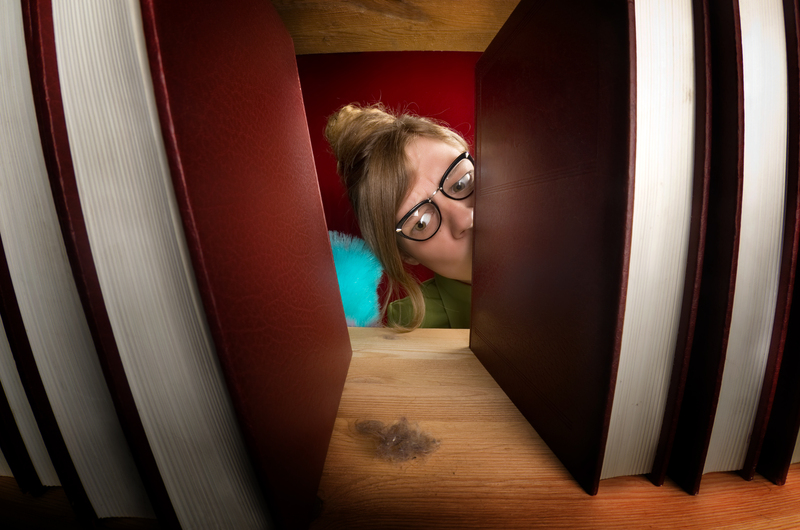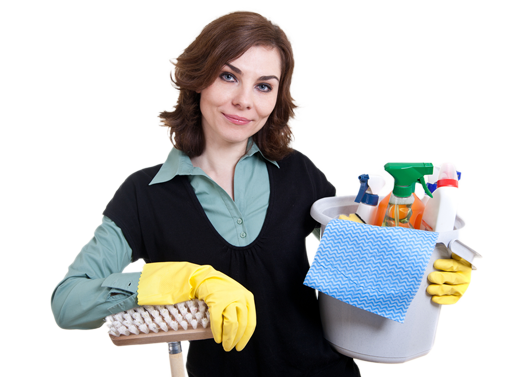Simple Techniques for Maintaining a Mold-Free Bathroom
Posted on 30/05/2025
Simple Techniques for Maintaining a Mold-Free Bathroom
Maintaining a mold-free bathroom can feel like an endless struggle, especially in high-humidity environments or with frequent use. However, with the right approach and a few simple techniques, anyone can create a bathroom that is both inviting and resistant to mold growth. In this comprehensive guide, you will discover easy, effective, and proven strategies to keep your bathroom fresh, hygienic, and most importantly--free from mold.

Why Mold Forms in Bathrooms
Understanding why mold develops in bathrooms is the first step in effectively preventing it. Mold, a type of fungus, thrives in warm, damp, and poorly ventilated environments. Bathrooms naturally accumulate moisture from showers, sinks, and even toilets, creating the perfect environment for mold spores to take hold and multiply. Common bathroom surfaces like grout, tile, caulking, and even painted walls are particularly vulnerable if humidity is not controlled.
- Humidity: The primary culprit in most mold outbreaks.
- Poor ventilation: Inadequate airflow leads to trapped dampness.
- Organic debris: Soap scum, body oils, and dust make excellent food sources for mold.
- Standing water: Puddles and drips often go unnoticed in corners and under sinks.
By understanding these root causes, you can target your efforts on the areas that matter most and effectively keep your bathroom mold-free.
Ventilation: The Key to a Mold-Free Bathroom
One of the simplest and most effective ways to maintain a mold-free bathroom is to improve ventilation. Proper airflow allows moisture to dissipate quickly, leaving mold spores little time to settle and multiply.
Install an Exhaust Fan
- Ensure your bathroom is equipped with a high-quality exhaust fan.
- Run the fan during and for at least 30 minutes after every shower or bath.
- Clean the exhaust cover regularly to maintain maximum airflow.
Open Windows and Doors
- Whenever possible, open windows while showering or bathing to allow fresh air to circulate.
- Keep the bathroom door ajar after use to let humidity escape.
With these easy changes, you can significantly reduce humidity and dramatically decrease the likelihood of mold formation.
Moisture Management: Keep Surfaces Dry
Moisture control is the heart of mold prevention in bathrooms. Implementing small daily habits can keep your bathroom dry and unwelcoming to mold.
Wipe Down Surfaces
- Use a squeegee to quickly dry shower walls and doors after each use.
- Wipe countertops, sinks, faucets, and floors with a towel to remove standing water and condensation.
Fix Leaks Immediately
- Inspect plumbing under sinks, around toilets, and behind washing machines for leaks.
- Address any dripping faucets or loose fittings as soon as they are discovered.
- Check for water stains on ceilings and walls, which can signal hidden leaks.
Use Bathmats and Towels Wisely
- Hang wet towels and bathmats to dry fully after use rather than leaving them in a heap on the floor.
- Regularly launder bathmats, towels, and shower curtains to eliminate any developing mold spores.
Adopting these simple bathroom mold prevention techniques will make a remarkable difference in reducing moisture and keeping your space fresh.
Cleaning Habits for a Mold-Free Bathroom
Regular cleaning not only removes visible dirt but also interrupts the mold life cycle. Even invisible spores are eliminated with the right products and routines.
Establish a Cleaning Schedule
- Clean bathroom surfaces thoroughly at least once a week, paying close attention to high-risk areas like grout and tile seams.
- Use a mixture of water and vinegar, or a bathroom-specific mold cleaner, for routine wipe-downs.
Pay Attention to Grout and Caulking
- Grout and caulk are particularly susceptible to mold. Scrub regularly with a stiff-bristled brush and an anti-mold cleaner.
- Replace any cracking or severely stained caulking promptly.
Don't Forget the Vents and Fans
- Dust and clean fan grilles and bathroom vents monthly to ensure they are not harboring dust and spores.
By embedding these routine habits into your cleaning schedule, you'll be doing your bathroom--and your household health--a favor.
Choosing the Right Materials for Mold Resistance
Whenever possible, select materials with mold-resistant properties. This applies whether you are remodeling or just updating a small section of your bathroom.
- Mold-resistant drywall: Often called greenboard, it's designed for wet environments and inhibits mold growth compared to standard drywall.
- Mold-resistant paint: Specialty bathroom paints contain mildewcides and stay cleaner longer.
- Non-porous tiles: Porcelain and glazed ceramic tiles absorb less water and are easier to clean than porous options.
- Silicone-based caulk: More flexible and resistant to mold than standard latex caulks.
Making these investments ensures your bathroom has a strong defense against persistent mold problems.
Preventing Hidden Mold Problems
Some bathroom mold issues occur out of sight, making them harder to identify until they become major concerns. Expand your mold prevention strategy by addressing potential hidden sources of moisture.
Check Behind and Under Fixtures
- Periodically inspect behind toilets, under sinks, and at the base of bathtubs or showers for signs of moisture or discoloration.
Don't Ignore the Ceiling and Walls
- Peeling paint, cracking plaster, or mysterious stains can indicate water seepage and hidden mold growth.
Monitor Humidity with a Hygrometer
- Install an inexpensive digital hygrometer to monitor your bathroom's humidity.
- Keep relative humidity below 50% whenever possible for a mold-free bathroom.
Early detection is key to stopping mold growth before it spreads or becomes a health hazard.
Natural Mold Prevention Solutions
Some homeowners prefer to use natural remedies for mold control. Fortunately, there are effective, eco-friendly options for keeping your bathroom mold-free.
- Vinegar: A natural acid, vinegar kills 82% of mold species. Fill a spray bottle with straight white vinegar and use as a daily spray on shower walls.
- Baking soda: Mix with water to create a mild abrasive paste for scrubbing tile, grout, and sinks.
- Tea tree oil: Mix a few drops with water in a spray bottle; tea tree oil is renowned for its antifungal properties.
- Hydrogen peroxide: Use a 3% solution as a safe and effective anti-mold spray for most bathroom surfaces.
These natural options are safe for most bathroom surfaces and effective at preventing mold in the bathroom.
Long-Term Maintenance for a Mold-Free Bathroom
Persistence and consistency are crucial for keeping your bathroom truly mold-free. Adopt these long-term techniques to ensure lasting results.
Seal Grout and Tile
- Apply a grout sealer every six to twelve months to act as a barrier against moisture and stains.
Upgrade Fixtures
- Consider touchless faucets and self-drying features for bathtubs and showers, which reduce the need for frequent contact and eliminate standing water.
Declutter the Bathroom
- Keep window sills, counters, and shower ledges free of unnecessary items that can trap moisture and hide mold.
- Opt for open shelving where possible to improve air circulation around your belongings.
Recognizing and Treating Minor Mold Issues
Despite your best efforts, you may occasionally spot small patches of mold. Respond promptly with these simple bathroom mold removal techniques:
- Scrub the affected area with a mixture of one part bleach to ten parts water or use undiluted vinegar for less severe cases.
- Rinse thoroughly and dry completely after cleaning.
- Wear gloves and ensure good ventilation when treating mold.
- If the mold returns or covers more than 10 square feet, consult a professional for safe removal.

Frequently Asked Questions about Mold-Free Bathrooms
How often should I clean my bathroom to prevent mold?
At a minimum, conduct a thorough cleaning once a week. However, daily quick wipe-downs and moisture control are the most effective ways to stop mold before it starts.
What humidity level is best for a mold-free bathroom?
Keep your bathroom's relative humidity below 50% at all times. This threshold makes it much harder for mold to gain a foothold.
Are natural sprays effective for mold prevention?
Yes, natural remedies like white vinegar and tea tree oil are proven to kill and prevent mold on hard, non-porous surfaces. For porous surfaces, you may need more specialized products or professional intervention.
When should I consider professional help for bathroom mold?
If mold covers a large area, returns frequently after cleaning, or if you suspect structural water damage, seek help from a certified mold removal professional to ensure your family's safety.
Conclusion: Preserve Your Sanctuary with Simple Mold Prevention
A mold-free bathroom is not just more attractive, but also healthier and longer-lasting. By learning and applying these easy and effective techniques for bathroom mold prevention, you protect your investment, safeguard your health, and create a more pleasant home environment. Remember, the simpler your mold prevention habits, the more likely you'll keep up with them, ensuring your bathroom stays sparkling clean and mold-free for years to come!





